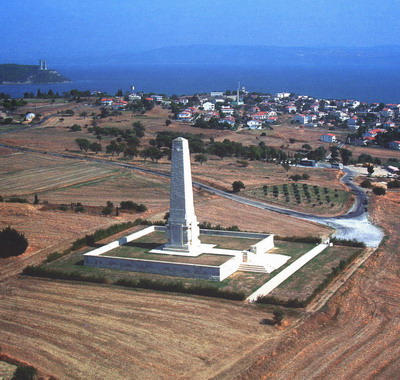William Appleyard
Date of birth: 1893
Date of death: 22.8.1915
Area: Outwood
Regiment: Yorkshire (Alexandra, Princess of Wales’s Own)
Family information: Son of Alfred and Sophie Appleyard
Rank: Lieutenant
War Service
William Appleyard immediately joined the University Officers Training Corps and later received a commission as Second Lieutenant, in the 6th Yorkshire Regiment, also known as the Green Howards. He was one of the original territorial officers of the 6th Battalion on the Army List in late 1914, was promoted to First Lieutenant in February 1915.
The 6th Battalion, Yorkshire Regiment, the Green Howards, was formed at Richmond in August 1914 and attached to 32nd Brigade, 11th (Northern) Division. The 6th Battalion went to Belton Park, near Grantham, when it was formed, but moved to Whitley Camp at Godalming, Surrey, in April1915.
On 3rd July 1915, the 6th Battalion, Green Howards, sailed from Liverpool on board the HMTS Aquitania, bound for the Dardanelles campaign. During the voyage, the Aquitania had a very narrow escape from being torpedoed by an enemy submarine. The 6th Battalion landed on the island of Lemnos on 10th July and then moved on to Imbros on 26th July, for two weeks of training and acclimatisation.
On 6th August 1915, the 6th Battalion embarked for Gallipoli, with a strength of 25 officers and 750 other ranks. At 23.00 hrs, on reaching Suvla Bay, “A” and “B” Companies landed on the beach south-east of Nibrunesi Point and commenced the attack on Lala Baba Hill. The two companies advanced to the top of the hill in darkness, and though the Turks scattered, they inflicted numerous casualties on their attackers. “C” Company had advanced on Turkish positions at Nibrunesi Point, before advancing on to Lala Bala Hill and linking up with the remnants of “A” and “B” Companies. The three companies formed a line facing north and charged down the opposite sloop of the hill, driving the enemy north-east, to Hill 10. By mid-day on 7th August, outpost positions had been established on Hill 10, but the 6th Battalion, Green Howards had incurred 266 casualties at this time.
Between the 8th and 10th August, the 6th Battalion was in action north of Scimitar Hill, before moving to the fire trenches on the eastern slopes of Hill 50. Here they remained until 18th August, when they withdrew to reserve positions, on the beach.
On the 21st August 1915, the 6th Battalion, Green Howards was involved in the attack on Ismail Oglu Tepe (“W“ Hill). The 32nd Brigade had been assigned the task of leading the attack, with the 6th Battalion, Green Howards, on the right. Their objective was a communications trench on the lower slopes of the hill. The attack commenced at 15.00 hrs , with Suvla Bay shrouded in mist. Within a few hundred yards of the start line, the battalion came under heavy machine-gun fire which resulted in many casualties, including most of the officers. The attack lost direction in the mist and though attempts were made to rectify the mistake, the attack came to a standstill. However about 100 men entered the Turkish line on the right, which they held until withdrawn the following day. On the 22nd August, the 6th Battalion, Green Howards was withdrawn to the Reserve area, with a strength of 285 officers and men.
Lieutenant William Appleyard was killed during the course of this action. His body was lost to the battlefield, consequently, his name is remembered on the Helles Memorial to the missing, a 30m high obelisk, on the Gallipoli Peninsular. The memorial bears the names of almost 21000 men, who died during the eight month campaign, who have no known grave.
Family Life
William Appleyard was born on 26th April 1893, the son of Alfred Appleyard and his wife Sophie, formerly Haynes. William was baptised on 4th June 1893, at St Mary Magdalene Church, Outwood. The family lived at Lofthouse Gate, where his father, Alfred Appleyard, was a successful joiner and carpenter. William Appleyard attended Wakefield Grammar School, where he was a senior prefect and member of both cricket and football teams. In 1912 he entered Cambridge University, where he was a Cave Exhibitioner of Clare College. He was in his fourth year at Cambridge, having already taken the Final Examination in Mathematics with honours, when war broke out.
 Helles Memorial
Helles Memorial

